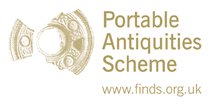Server check!
You are on the training database
Portable Antiquities Scheme user survey 2006
Download full report. 542 KB - pdf format
1. The Portable Antiquities Scheme User Survey 2006 aimed to establish how opinions of the Scheme have changed since the 2004 User Survey was carried out as part of the Hawkshead Review. Consequently, the 2006 User Survey questionnaire repeated the questions asked in the earlier survey, with three minor modifications.
2. There was a good response to the survey. A total of 576 responses were received, compared with 424 responses in 2004. A high proportion of respondents (81%) had been directly involved in the Scheme. A considerable majority of respondents strongly agree or agree that the Scheme has made a positive change:
- by advancing knowledge of the past by systematically recording archaeological objects found by the public (85%)
- by informing finders about the importance of recording their finds (86%)
- in raising general awareness about the importance of archaeological finds for appreciating our heritage (81%)
- by educating about conservation good practice for finds and sites (73%)
- by increasing opportunities for public involvement in archaeology (65%)
3. Two thirds of respondents (67%) strongly agreed or agreed that the Scheme is succeeding in gradually changing attitudes and improving awareness so that there is a common understanding of the need to record and report archaeological finds.
4. Three quarters of respondents (76%) have used the PAS website, 20% use it monthly or more often.Respondents were asked to identify in what capacity their main interest in the Scheme lies. Of the five groups (general public, education, academic, archaeologists, and museum staff), the public are most convinced of the Scheme’s progress towards its aims (73-92%1) and of its success in gradually changing attitudes (75%1). By contrast, archaeologists are least convinced of the Scheme’s progress (43-77%1) and of its success in gradually changing attitudes (45%).
5. In comparison with 2004 respondents are more positive about the Scheme’s progress towards its aims:
- 86% now strongly agree or agree that the Scheme has made a positive change by informing finders about the importance of recording their finds, compared with 82% in 2004
- 81% now strongly agree or agree that the Scheme has made a positive change in raising general awareness about the importance of archaeological finds for appreciating our heritage, compared with 78% in 2004
- 73% now strongly agree or agree that the Scheme has made a positive change by educating about conservation good practice for finds and sites, compared with 60% in 2004
- 65% now strongly agree or agree that the Scheme has made a positive change by increasing opportunities for public involvement in archaeology, compared with 57% in 2004.
6. Compared with 2004 slightly fewer respondents agree that the Scheme is gradually changing attitudes and improving awareness (67% compared with 70% in 2004), although slightly more agree strongly that it is succeeding in this way (28% compared with 24% in 2004).
7. Negative comments reduced from 20% of all respondents in 2004 to 15% in 2006. Positive comments also reduced, from 12% of all respondents in 2004 to 7% in 2006.


